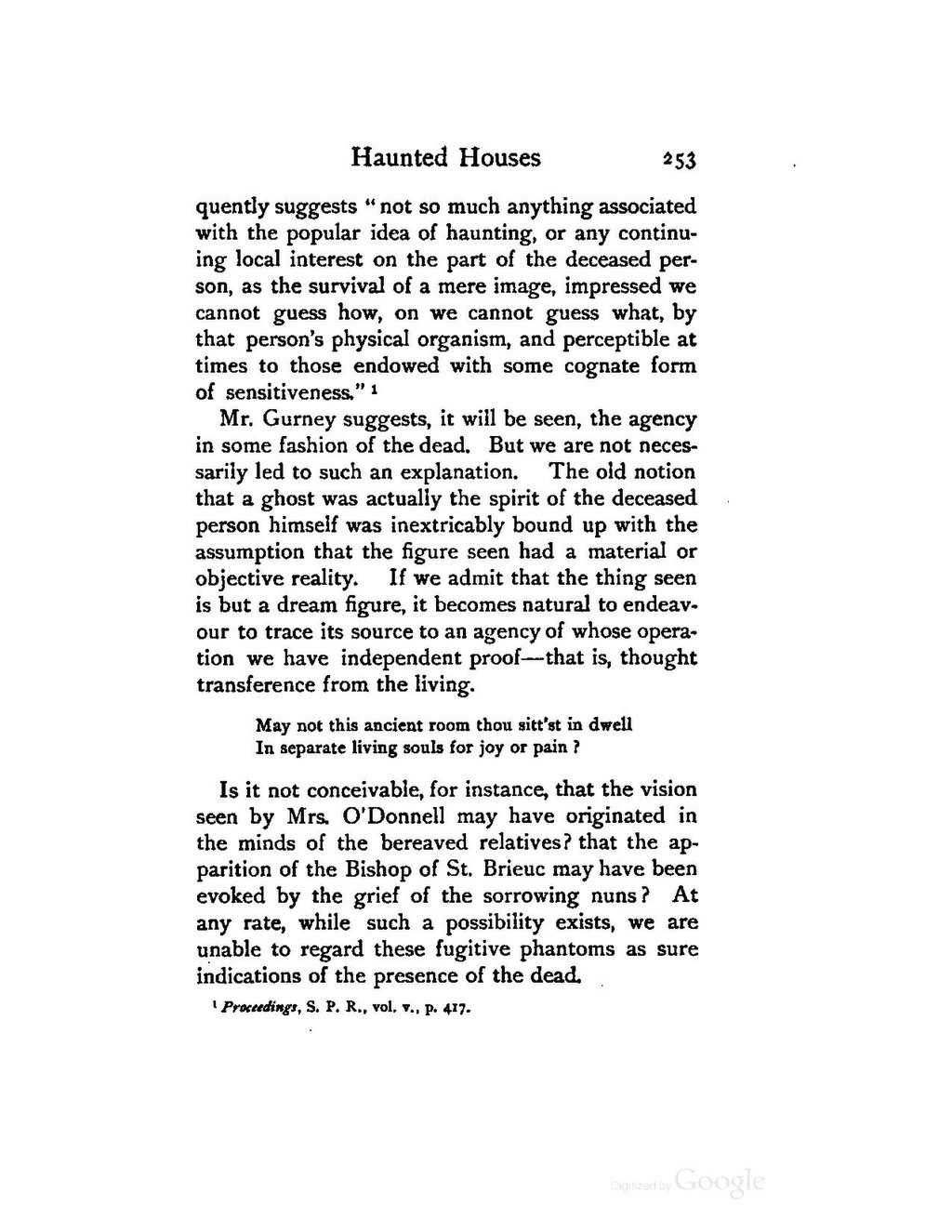quently suggests "not so much anything associated with the popular idea of haunting, or any continuing local interest on the part of the deceased person, as the survival of a mere image, impressed we cannot guess how, on we cannot guess what, by that person's physical organism, and perceptible at times to those endowed with some cognate form of sensitiveness."[1]
Mr. Gurney suggests, it will be seen, the agency in some fashion of the dead. But we are not necessarily led to such an explanation. The old notion that a ghost was actually the spirit of the deceased person himself was inextricably bound up with the assumption that the figure seen had a material or objective reality. If we admit that the thing seen is but a dream figure, it becomes natural to endeavour to trace its source to an agency of whose operation we have independent proof—that is, thought transference from the living.
May not this ancient room thou sitt'st in dwell
In separate living souls for joy or pain?
Is it not conceivable, for instance, that the vision seen by Mrs. O'Donnell may have originated in the minds of the bereaved relatives? that the apparition of the Bishop of St. Brieuc may have been evoked by the grief of the sorrowing nuns? At any rate, while such a possibility exists, we are unable to regard these fugitive phantoms as sure indications of the presence of the dead.
- ↑ Proceedings, S. P. R., vol. v., p. 417.
